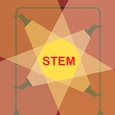STEM Forecast: Five Predictions for 2014
A MiddleWeb Blog
I’ve been contemplating the destiny of STEM, at least in the short term. What’s going to happen with STEM this year?
In looking back over 2013, the initiative has picked up visibility and momentum, and that’s a good thing. Without science, technology, engineering and math, we wouldn’t have much of what we take for granted in our lives today.
Common sense plus economic data dictate that expanding and improving STEM education is key to our economic growth. U.S. students need more focus in STEM subjects to lead the worldwide marketplace and solve pressing world problems as adults. But will we get that increased focus on STEM? Will this relatively recent initiative blossom or fade?
What’s going to happen in 2014? The fact that I have no ability at all to predict the future doesn’t stop me from taking a stab at it. So, here are five things I predict will happen with the STEM initiative in 2014.
5 STEM Predictions for 2014


These trends will continue: middle school STEM programs will be increasingly commonplace; high schools will offer engineering coursework; and school systems will embed more STEM language and standards in their courses of study. Also look for more policies that encourage teachers to incorporate outdoor learning in STEM subjects. Oh – and robotics competitions will continue to gain steam and popularity.
2. Technology will begin playing a larger role in the STEM learning process. Hang on! Video games will begin to make slow but steady inroads into STEM classrooms. More teachers will see games as a viable means of fostering STEM learning thanks to nonprofits such as GameDesk that are building libraries of full-fledged STEM gaming curriculum.

In 2014, teachers and students will be figuring out how to better use technology to make STEM education more mobile and accessible inside and outside of school. (I’m betting the students will win the creativity banner for most engaging ideas.)
3. STEAM will become an increasingly popular adaptation of STEM. The debate will continue in 2014 over whether to convert STEM to STEAM (by including the Arts in STEM). Watch for educators to increasingly lean toward emphasizing and including the role of the arts and humanities. More and more educators view this marriage as empowering young people and teaching them creative problem-solving and innovation.
That said, STEM advocates will continue to point to the purpose for STEM education and insist on a rigorous, integrated focus on Science and Math content applied through an engineering design process. The struggle to merge these is already on. If art is adopted as part of a true STEM initiative, art students may find themselves conducting experiments with product designs and working in an industrial design capacity. That may cause some pushback from the art educators.

As the pool of STEM workers becomes less able to meet workforce demands, these groups may increasingly become the backbone of the STEM economy. Ideally, these under-represented populations will help to fill our STEM workforce demands for years to come.
5. STEM schools will create more business partnerships. Companies are always in need of properly trained and motivated graduates from which to hire tomorrow’s workforce. They already facilitate programs to promote student-employee interactions in many communities. Many companies bring students onsite where they experience how their learning in science and math applies to real-world projects. Businesses frequently “adopt” schools in communities where they operate in hopes of capturing students’ imaginations and inspiring the next generation of scientists to pursue STEM careers.
In 2014 STEM teachers will actively seek support from more businesses to help them engage kids in applying science, technology, and math through engineering – and to draw them into fields they might otherwise never have considered. (Keep your eyes out for an upcoming guest post about building partnerships with local businesses to promote STEM programs.)
All in all, I predict that 2014 will bring significant STEM progress – and thankfully it doesn’t take someone with prophetic talents to foresee that.
 New Feature: The STEM Spotlight.
New Feature: The STEM Spotlight.
I’m adding a new feature to my blog posts this year – the STEM Spotlight. In each 2014 post I’ll include several valuable STEM ideas, resources or issues that I find particularly useful or compelling. Here goes!
- Keep the STEM talent at home with incentives. Ohio Rep. Jay Hottinger, R-Newark, is co-sponsoring a bill that offers income tax credits to students who earn degrees in STEM fields and then stay and work in Ohio at least five years after they graduate.
- There’s an app for that! Students are learning how to design apps and video games for mobile devices. This website identifies 10 tools students can use to design apps and video games. Imagine computer programming 101 right in your classroom!


 New Feature: The STEM Spotlight.
New Feature: The STEM Spotlight.
































